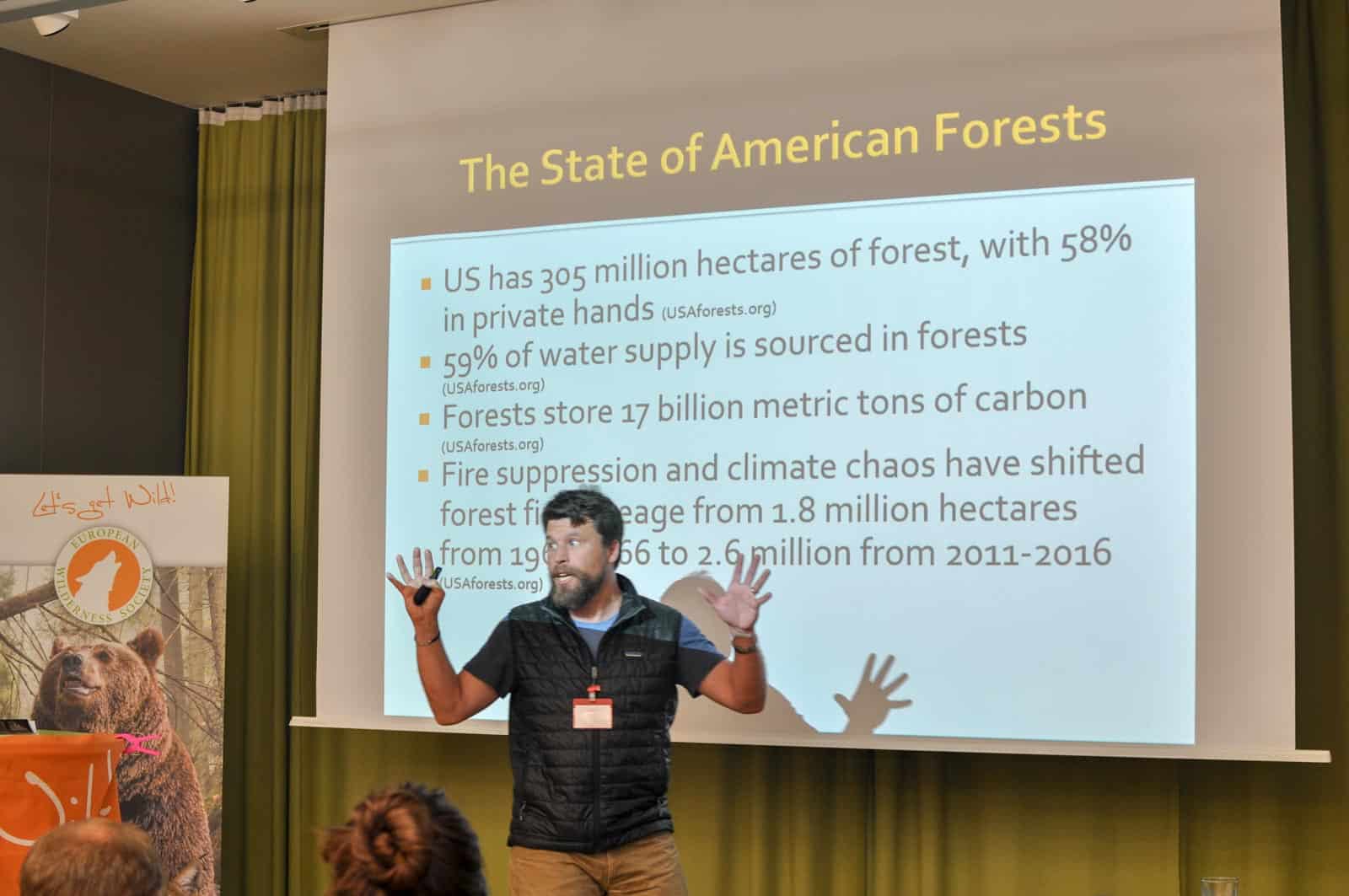How climate change impacts forests
During the Wilderness Academy Days, which took place in the UNESCO Biosphere Reserve Lungau, there was a special session on climate change impact on forests. It was a great event with many international experienced and new Wilderness Advocates. Over the next days, we will reflect on the many inspiring presentations and keynote speeches.
Please also read: New project: Multiperspective view on biodiversity in forests
Forest development in times of climate change
Prof. Dr. Pierre Ibisch from Eberswalde University for Sustainable Development and the Centre for Econics and Ecosystem Management, was one of the keynote speakers during the Wilderness Academy Days. During his many years of forest research, he has made valuable observations and studies. Especially the impact of climate change on forest development in different parts of the world, indicate sometimes alarming scenarios.
As summers are getting warmer, Ibisch has observed how young trees, both native and exotic species, are struggling to survive. Last summer, Germany was facing one of the warmest summers in the last years. As a result, the number and severity of forest fires also increased. A big forest fire in Brandenburg for example, resulted in an ecological disaster. Ibisch also studied the effects of different forest types on changing climates. Interesting findings showed a relationship between the mean temperature within the forest and the forest biomass. The higher the density of living trees, the cooler the temperature is in the forest, during hot summer days. The cooler temperatures enable trees to be more productive. As a result, forests become more resilient to higher temperatures. It is thus very important to allow natural development in forests to increase the biomass density in the age of climate change.

Changing nature in Majella
The impact of climate change is visible not only in Brandenburg, but in many places. Giuseppe Marcantonio from Majella National Park, presented during the Wilderness Academy Days on the changing vegetation due to climate change. Within Majella National Park lies Majella Wilderness, long-time partner of the European Wilderness Network.
Through a global monitoring network, Majella surveys permanent plots in alpine areas on vegetation change. An important observation is that plant species’ distributions are climbing in altitude. Not only plant communities change, as Marcantonio showed. Interactions between animals also impact the forest development. Majella is home to several wolf packs that hunt wild boar as primary food source. As a result, the wild boar tend to stay outside of the wolf pack territories, allowing forest to rejuvenate more easily.

Wolf and wild boar relations
The effects of wolf on wild boar populations is in fact even more complicated, as Vlado Trulik presented during the Wilderness Academy Days. A study from Slovakia shows how established wolf packs keep the outbreaks of Classical Swine Fever under control. By taking out the weakest and sick wild boar, wolves prevent spreading of the virus. As a result, the forest and forest fauna become healthier as well.

Multiperspective view on forest biodiversity
The impacts of climate change on forest biodiversity are diverse and often still poorly understood. Due to different management strategies in Europe, the effects are more difficult to identify. As Vlado Vancura presented during the Wilderness Academy Days, forest management differs a lot between the Alps and Carpathian Mountains for example.
Therefore, as part of the project ‘Multiperspective view on biodiversity in forests’ a group of international forest experts will visit several site in Europe to witness and observe different forest management strategies. One of them will be in the Slovakian Tatra Mountains. The Tatra Mountains are faced with severe logging practices due to bark beetle control and windfall damage. These result from changing climate, rising temperatures, and increasing weather extremes.
And not only do we see these effects in Europe, as John Hausdoerffer presented during the Wilderness Academy Days. The US has been facing 30% larger forest fires than in the previous decade. Only in California in 2019, already more than 400 000 hectares burned down. And with damaged forests, the bark beetle is thriving. As Hausdoerffer’s stated, experts estimate that the next 10 years, bark beetles will kill 100 000 trees per day.

Find the abstracts of these and other presentations that were held during the Wilderness Academy Days below!








